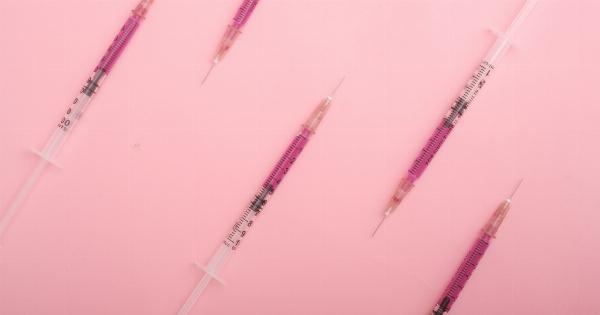The concept of herd immunity has been a topic of great discussion and debate during the COVID-19 pandemic.
Recently, a British expert has stated that at least six out of ten individuals need to be infected with the virus in order to achieve herd immunity. In this article, we will delve into the details of this claim and explore the implications it may have.
Understanding Herd Immunity
Herd immunity, also known as population immunity, is a concept that refers to a situation where a large portion of a community becomes immune to a particular disease, thereby providing indirect protection to those who are not immune.
This phenomenon occurs when a significant number of individuals have either been vaccinated against the disease or have developed immunity through previous infection.
The Importance of Herd Immunity
Herd immunity plays a crucial role in preventing the spread of infectious diseases, especially in populations where not everyone can be vaccinated.
It protects vulnerable individuals who are unable to receive vaccinations due to various reasons, such as allergies or weakened immune systems.
What Does the British Expert Say?
The British expert suggests that in order to achieve herd immunity against COVID-19, a minimum of six out of ten individuals need to contract and recover from the virus.
This claim is based on the estimated contagiousness, or reproduction number (R0), of the virus. According to the expert, the R0 of COVID-19 is approximately 2.5. This means that, on average, each infected person will transmit the virus to 2.5 other people.
Calculating the Herd Immunity Threshold
In order to calculate the herd immunity threshold, we need to use the formula: Herd Immunity Threshold = 1 – (1/R0). For COVID-19 with an estimated R0 of 2.5, the calculation would be: 1 – (1/2.5) = 0.6.
This means that approximately 60% of the population needs to be immune to the virus in order to achieve herd immunity.
Benefits and Challenges of Achieving Herd Immunity
There are potential benefits and challenges associated with achieving herd immunity against COVID-19. Let’s explore them:.
Benefits:
1. Reduced Transmission: With a significant portion of the population immune to the virus, the overall transmission of the disease is expected to decrease, resulting in fewer new infections.
2. Protection of Vulnerable Individuals: Through herd immunity, vulnerable individuals who cannot be vaccinated or are more susceptible to severe illness will be indirectly protected, as the virus will have fewer opportunities to reach them.
3. Economic Recovery: With lower transmission rates, it becomes possible to lift certain restrictions and resume economic activities more safely, leading to a faster recovery.
Challenges:
1. High Infection Rates: Achieving herd immunity through infections alone would mean a higher number of individuals getting infected, which can lead to an overwhelming burden on healthcare systems and potential loss of lives.
2. Long-term Immunity: The duration of immunity after infection is still under investigation. If immunity wanes over time, achieving and maintaining herd immunity may be challenging.
3. Vaccine Availability: Depending solely on infections to achieve herd immunity may delay the rollout and distribution of vaccines, which are crucial in controlling the spread of the virus.
Alternative Approaches
Given the challenges and risks associated with achieving herd immunity through infections, many countries have focused on vaccination campaigns as a safer and more controlled way to achieve population immunity.
Vaccines provide a more predictable outcome and help prevent severe illness and hospitalizations.
Conclusion
Herd immunity is an important concept in combating infectious diseases, including COVID-19.
While the British expert suggests that six out of ten individuals need to contract the virus to achieve herd immunity against COVID-19, it is important to consider alternative approaches such as widespread vaccination. These approaches can help protect vulnerable individuals and minimize the societal and healthcare burdens associated with high infection rates.
It is crucial to continue following public health guidelines and measures to control the spread of the virus until population immunity can be achieved through safe and effective means.




























